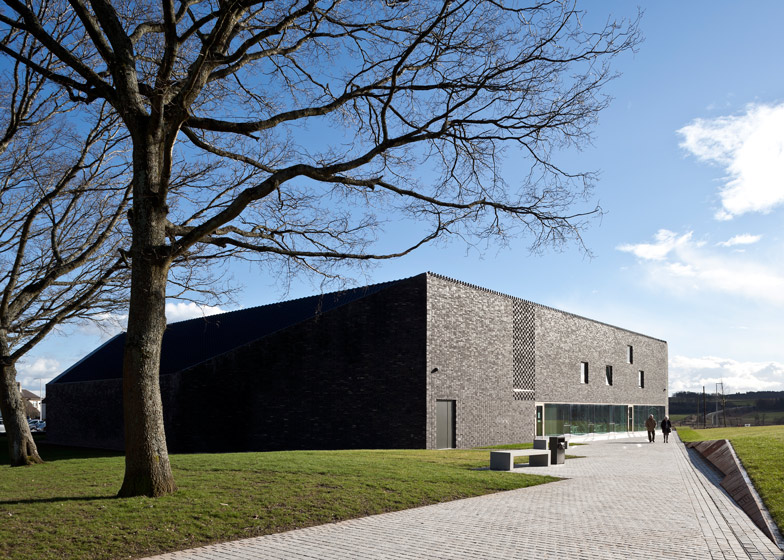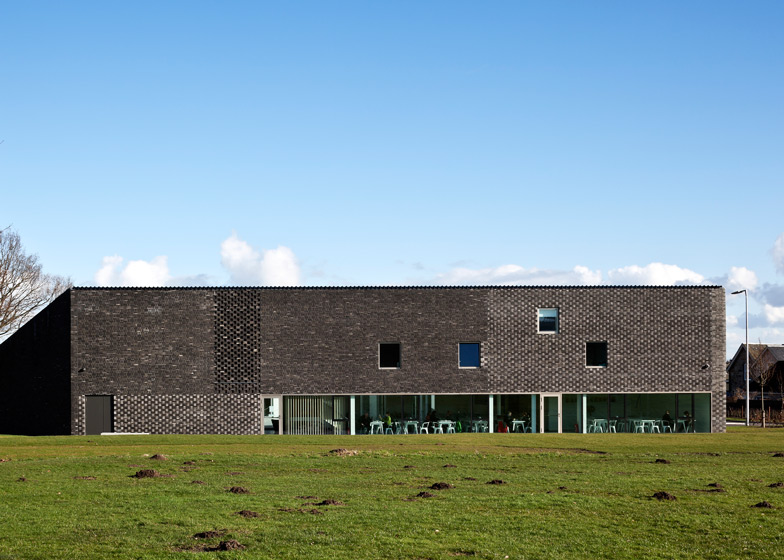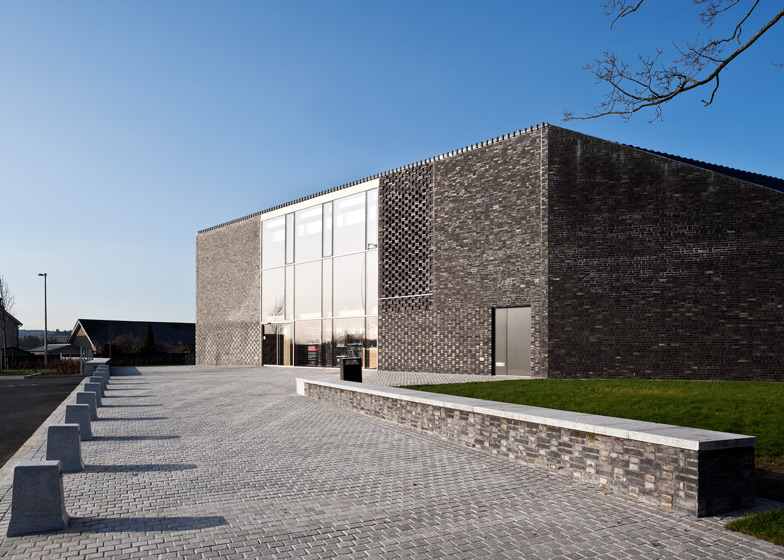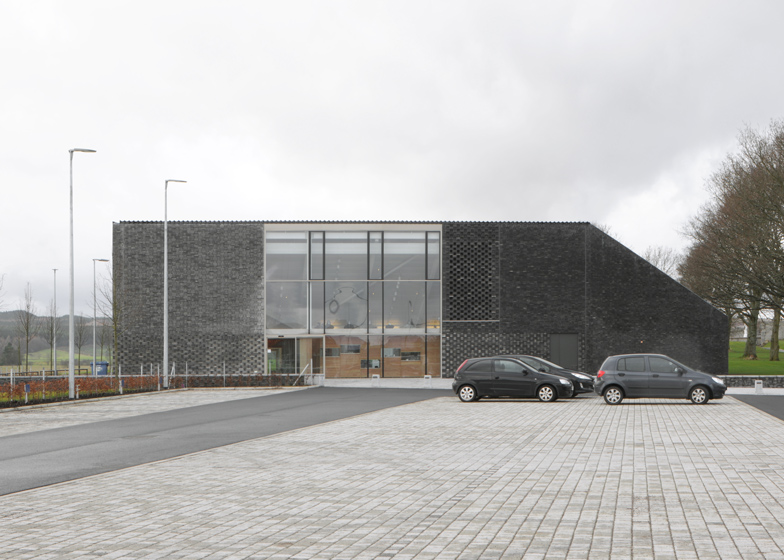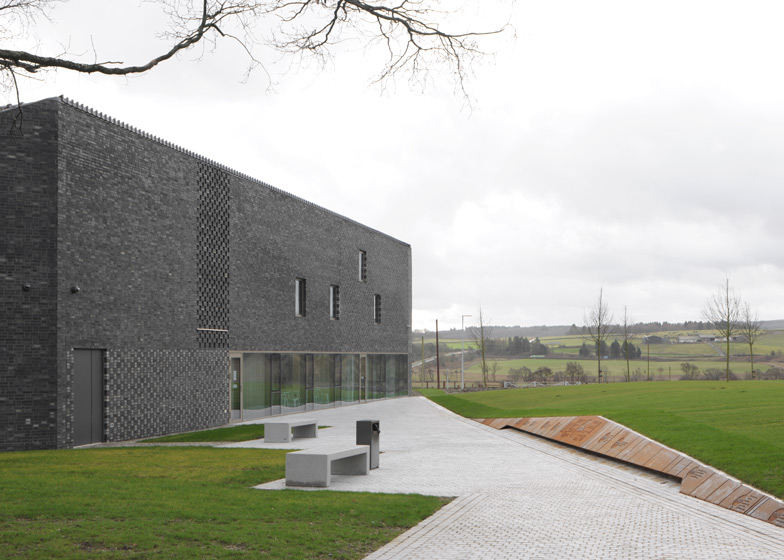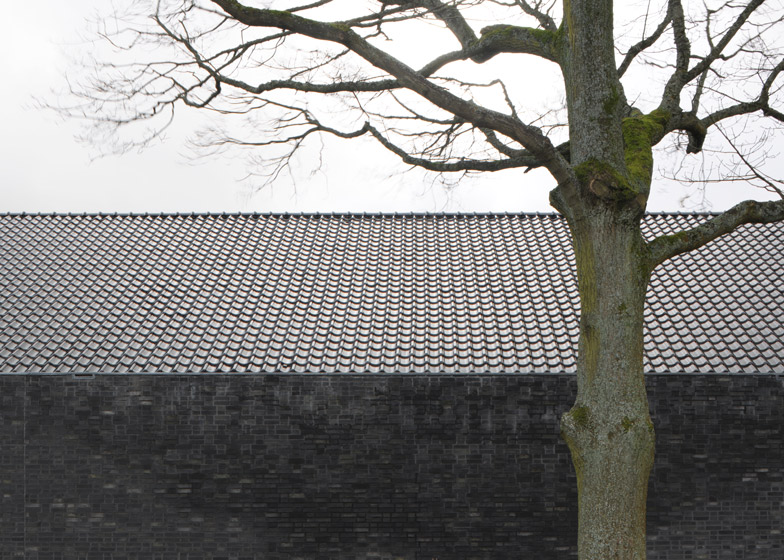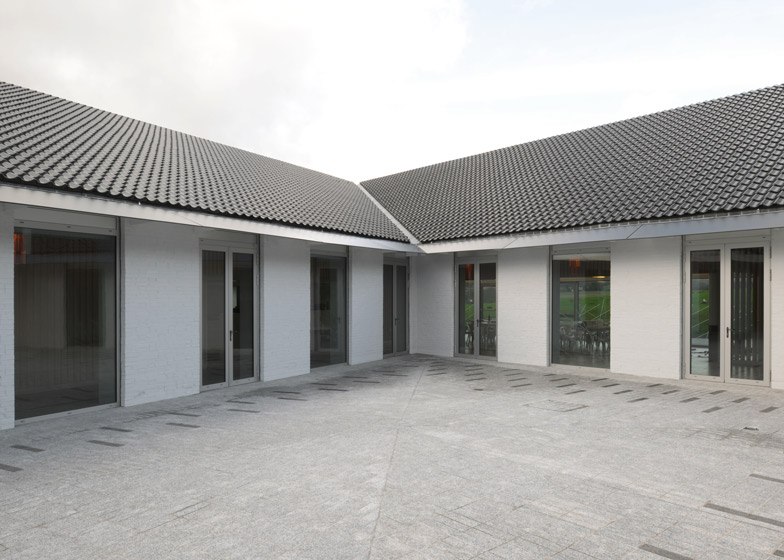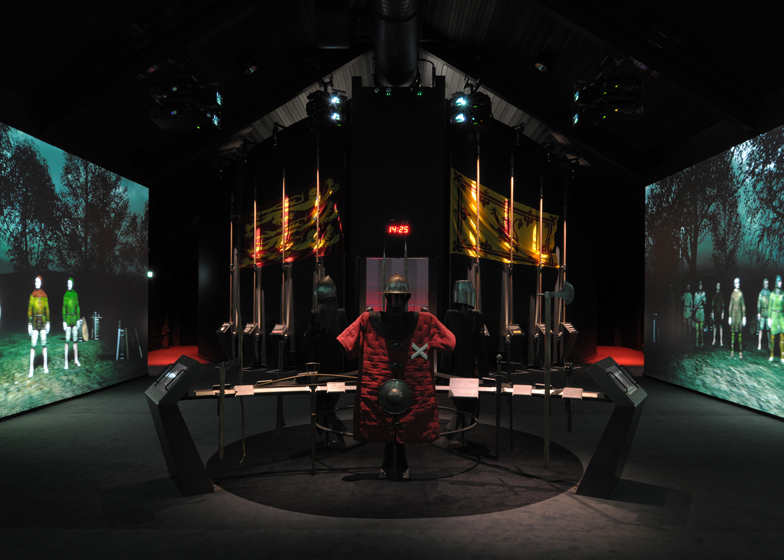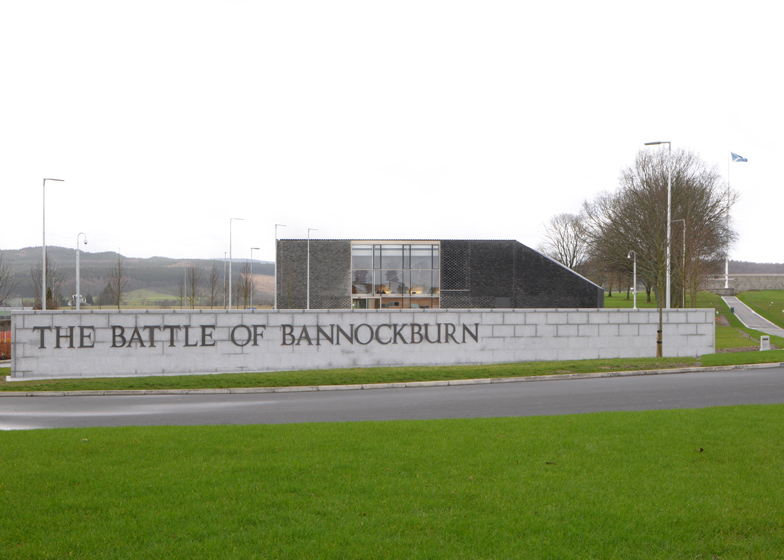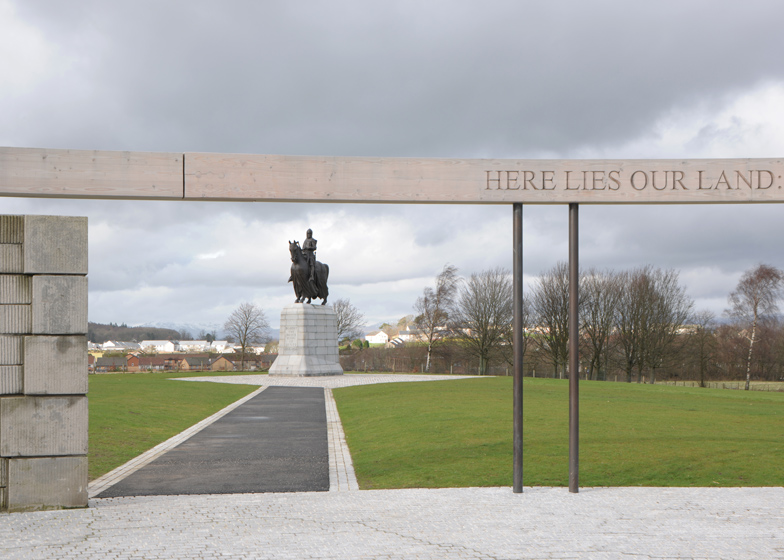Reiach and Hall Architects have used grey bricks to create a sombre, respectful facade for the Battle of Bannockburn Visitor Centre near the Scottish city of Stirling (+ slideshow).
Edinburgh-based Reiach and Hall Architects built the centre in time for the 700th anniversary of the Battle of Bannockburn, where Scots defeated thousands of English soldiers trying to take control of nearby Stirling Castle.
The centre is on grounds where fighting took place. Its form was inspired by traditional farm buildings, but is designed to be subservient to nearby monuments, which include a memorial rotunda, cairn, flagpole and bronze equestrian statue of Robert the Bruce, King of Scots, who led the battle.
"The building is not the story – it merely serves the story – so we wanted it to be visually serious and discreet, almost in the shadows," architect Neil Gillespie told Dezeen.
Light and dark grey bricks give the building a textured facade, arranged in an alternating pattern of long and short sections. Perforated brick sections also reference medieval chainmail armour, and allow air into the mechanical ventilation plant located in the upper levels of the building.
Inside, the dark rhombus-shaped exterior gives way to a lighter, more approachable interior, which is arranged around a central courtyard. The courtyard is shielded from the wind, and provides additional space for the cafe and events.
"The courtyard is very important because it organises the plan and circulation around it, and makes the building easy to navigate. It is the architectural key," explained Gillespie.
The corridors surrounding the courtyard are visually softened with natural materials and decorative features, such as the slatted timber on the walls and the pendant lights, also designed by Reiach and Hall. Sloping roofs also bring the scale down to a single-storey in the corridors around the courtyard, in contrast to the imposing two-storey exterior.
"The contrast was intentional," said Gillespie. "The building had to be both modest and monumental. We were attempting marry a need to mark an important site and create a comfortable place to rest and have a cup of tea."
Visitors enter through a double-height glazed section in the east wing, which also has a shop. The cafe is located cross the courtyard in the west wing, which opens up to the landscape and monuments beyond. The south wing has toilets, offices and a kitchen, and the north wing features an interactive installation by design consultancy Bright White, which allows visitors to participate in a simulation of the battle.
The building replaces a visitor centre from the 1970s, which was built next to the road and had a car park between it and the monuments. Reiach and Hall have swapped the arrangement around, so that the car park comes first, and the visitor centre now opens on to the memorial grounds.
The architects were also commissioned to do significant conservation work on the site's monuments, and Stirling-based office Ian White Associates did the landscaping.
"The monuments and the site in general were crumbling, and the landscape was being used as a place to walk dogs," explained Gillespie. "Our scheme with Ian White Associates sought to regain some dignity to the battlefield, where thousands died a brutal death."
Photography is by David Grandorge, unless otherwise stated.
Here is some more information from Reiach and Hall Architects:
Battle of Bannockburn Visitor Centre, Scotland
Following a design competition in 2010, Reiach and Hall Architects were appointed by the National Trust for Scotland in collaboration with Historic Scotland, for the design of a new visitor facility at one of Scotland's most historic sites, The Battle of Bannockburn, near Stirling.
The overall project consisted of four distinct yet complementary parts: significant conservation work to the Category A-listed monuments, including the rotunda, the magnificent bronze equestrian statue, the flagpole and the cairn, carried out by Reiach and Hall Architects; improvements to the overall landscape of the site and landscape works associated with the new visitor centre carried out by Ian White Associates; a new visitor centre by Reiach and Hall Architects and a radical dramatic interpretation of the battle carried out by Bright White Ltd.
The project was scheduled for completion in time for the commemoration of the 700th anniversary of the Battle of Bannockburn in 2014.
The role of the visitor centre is concerned with increasing the understanding of two fundamental issues, landscape and its part in the victory and the telling of a remarkable story. The new landscape design and the design of the new building attempt to give a sense of discreet dignity to this historic battlefield through simple and durable forms and materials. The drama of the story however has been retold through groundbreaking digital technology allied to exhaustive historical research, and incorporating an exhibition and audio-visual presentation that illustrate the battlefield events of June 1314, when King Robert the Bruce routed the forces of King Edward II to win freedom for the Scots from English domination.
The new building sits quietly to the side of the main avenue approach that links the entrance off the Glasgow Road to the hill-top monuments, with their open prospect over the battlefield to Stirling Castle, the Ochil hills and the north.
The building proposals imagine a simple ensemble of resonant and evocative forms. The exterior has been designed to suggest traditional building forms and materials, yet rendered unfamiliar and ambivalent through their finish and detail. The external facades are textured and patterned in the manner of cloth or chainmail. On entering, the almost austere form gives way to light-filled airy interiors.
The new building offers the visitor two things: hospitality and information. A courtyard or steading form symbolises shelter and hospitality through the creation of an enclosed place; a clearly defined defensible space that captures the sun and protects from the wind. To the south of the courtyard lie all the service spaces, toilets, stores, kitchen, offices, all vital to the efficient running of the centre. To the west lies the cafe with views to the monuments and to the east the shop and entrance reception.
To the north of the courtyard lies a generous hall along with prologue and epilogue spaces that offer simple flexible vessels for the interpretive installations and exhibition spaces.

